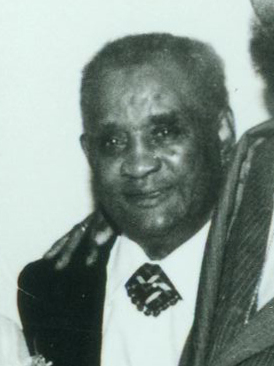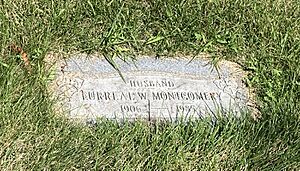Little Brother Montgomery facts for kids
Quick facts for kids
Little Brother Montgomery
|
|
|---|---|
 |
|
| Background information | |
| Birth name | Eurreal Wilford Montgomery |
| Born | April 18, 1906 Kentwood, Louisiana, United States |
| Died | September 6, 1985 (aged 79) Chicago, Illinois, U.S. |
| Genres | |
| Occupation(s) |
|
| Instruments |
|
| Labels | Earwig Music |
| Associated acts |
|
Eurreal Wilford "Little Brother" Montgomery (born April 18, 1906 – died September 6, 1985) was an American jazz, boogie-woogie, and blues musician. He was a talented pianist and singer.
Little Brother Montgomery mostly taught himself to play music. He became a very important blues pianist with his own special style. He was also good at playing different kinds of music. He even played in big jazz bands that used written music, even though he learned everything by ear!
Early Life and Music
Little Brother Montgomery was born in Kentwood, Louisiana, a town near the Mississippi border. This was across Lake Pontchartrain from New Orleans, where he spent much of his childhood. His parents were of African-American and Creek Indian background. He got his nickname because he looked like his father, Harper Montgomery. People called him "Little Brother Harper," which later became "Little Brother Montgomery."
He started playing the piano when he was only four years old! By the age of 11, he left home and spent four years playing in places called barrelhouses in Louisiana. A barrelhouse was a simple place where people gathered to listen to music. A big influence on his music was Jelly Roll Morton, another famous pianist, who used to visit Montgomery's family.
A Career in Music
Early in his career, Little Brother Montgomery played music in lumber and turpentine camps. These were in Louisiana, Arkansas, and Mississippi. He then played with bands led by Clarence Desdunes and Buddy Petit.
From 1928 to 1931, he lived in Chicago. He often played at rent parties, which were parties where people paid to get in to help the host pay their rent. It was in Chicago that he made his first recordings. From 1931 to 1938, he led his own jazz group called the Southland Troubadours in Jackson, Mississippi.
In 1941, Montgomery moved back to Chicago. This city became his home for the rest of his life. He also traveled to other cities in the United States and even to Europe to perform. He toured briefly with another blues musician, Otis Rush, in 1956.
Growing Fame
In the late 1950s, more people started to discover his music. His fame grew even more in the 1960s. He continued to record many albums. In 1969, he even started his own record label called FM Records. The "FM" stood for Floberg Montgomery, using his wife's maiden name.
Montgomery visited Europe several times in the 1960s and recorded some albums there. He performed at many blues and folk festivals in the 1970s. People saw him as a "living legend" because he was a link to the very early days of blues music in New Orleans.
Some of the songs he wrote include "Shreveport Farewell," "Farrish Street Jive," and "Vicksburg Blues." His instrumental song "Crescent City Blues" was even used as the basis for a song by Gordon Jenkins. That song was then adapted by Johnny Cash into his famous hit, "Folsom Prison Blues."
In 1968, Montgomery played on two albums by the group Spanky and Our Gang. These albums were Like to Get to Know You and Anything You Choose b/w Without Rhyme or Reason.
Little Brother Montgomery passed away on September 6, 1985, in Champaign, Illinois. He was buried in the Oak Woods Cemetery. In 2013, he was honored by being added to the Blues Hall of Fame.
The famous R&B musician and producer Paul Gayten was Little Brother Montgomery's nephew.
See also
- Adelphi Records
- List of blues musicians
- List of Chicago blues musicians
- List of people from Louisiana
- 77 Records
- In Spanish: Little Brother Montgomery para niños


